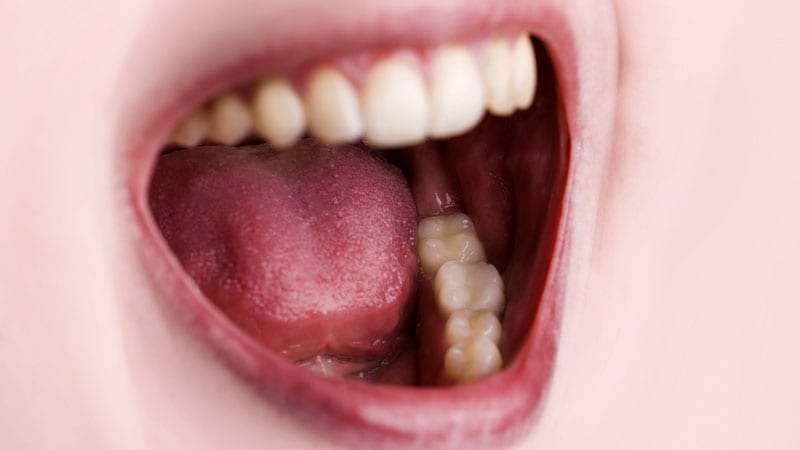
Editor’s note: Find the current COVID-19 news and guidance in Medscape’s Coronavirus Resource Center
.
SARS-CoV-2’s infection websites are popular in the air passages and other parts of the body, however brand-new research study indicates that the infection likewise contaminates mouth cells.
The findings by Ni Huang, PhD, from the Wellcome Sanger Institute in Cambridge, United Kingdom, and Paola Perez, PhD, from the National Institutes of Health (NIH), and colleagues, released online in Nature Medicine on Thursday, may help discuss the taste and odor loss, dry mouth, and blistering some clients experience, the authors state.
Previous research studies have actually suggested that testing saliva is almost as accurate as deep nasal swabbing in diagnosing COVID-19, however bit was known about where the infection in the saliva comes from.
The scientists say the mouth should be contributed to the respiratory tracts in addition to the digestion system, capillary, and kidneys as infection sites for COVID-19
Saliva Is Infectious
.
” This is actually the first direct proof that we have that SARS-CoV-2 can not only contaminate and replicate in cells of the mouth but the fluid produced by the mouth is also contagious,” coauthor Blake Warner, DDS, PhD, MPH, from the NIH’s National Institute of Dental and Craniofacial Research study, told Medscape Medical News.
.
Warner stated that the worldwide group of researchers discovered that the salivary glands were working essentially as a virus production factory.
” This is the prime environment for a SARS-CoV-2,” he said. “The salivary glands are not only proficient at making proteins, they are likewise good at producing fluids. Those fluids have the capability to transfer the infection to other individuals but also spread it to other parts of the body.”
The findings likewise help validate the requirement for mask-wearing, correct individual protective devices, and social distancing, Warner kept in mind.
He stated it likewise may have implications for testing.
” We require to have folks who are tested regularly, prospectively in the nasal cavity and in saliva until they get infection, particularly if they are a high-risk accomplice,” he said. “Only then will we comprehend whether this early infection is occurring first in the mouth or first in the nose and after that follow them forward.
” Part of our data recommend that you might miss some folks if you’re only checking one site,” he included.
“ Rabbit Hole” Tests Caused Discovery
.
Warner explained the “rabbit hole” experiments that led to the discovery. They utilized saliva from testing facilities and contributed tissue from autopsies of COVID-19 patients to show that the infection was present and might reproduce in the salivary glands.
Then they used tissue from acutely infected live donors and were able to confirm that the salivary glands and mucosae could support both infection and duplication.
Researchers then evaluated the saliva from a small group of people with asymptomatic COVID-19 to see if it could contaminate other healthy cells in a lab dish and found that it could.
Lastly, to explore the link in between oral symptoms and virus in saliva, the scientists gathered saliva from a different group of 35 NIH volunteers who had moderate or asymptomatic COVID-19
Of the 27 individuals who had signs, those with virus in their saliva were more likely to report loss of taste and odor, suggesting that oral infection might discuss oral symptoms of COVID-19
Comprehending of the mouth’s participation in COVID-19 infection can assist lead to responses on lowering transmission within and outside of the body, the team concludes.
William Schaffner, MD, a contagious illness professional at Vanderbilt University School of Medication in Nashville, Tennessee, informed Medscape Medical News that he found the series of experiments “interesting.”
The paper makes it clear that “an unappreciated area of the body may play a role in COVID infections,” he stated, and it likewise assists address the confusing question of why numerous COVID-19 clients lose their taste.
” I think for the typical person I do not believe it indicates all that much other than you do not want to kiss someone who’s got COVID,” he said.
However Schaffner says he’s intrigued by the paper’s implications concerning how the infection is transmitted– and much more worried about young crowds gathering to southern shores.
” Now we have all these people on spring break,” he said. “They’re not simply staying on the beaches, they’re not just going to the bars, some will have romantic relationships and this may be yet another way this infection could go from one person to another really effectively.”
Marcia Frellick is an independent journalist based in Chicago.
For more news, follow Medscape on Facebook, Twitter, Instagram, and YouTube.
No comments:
Post a Comment